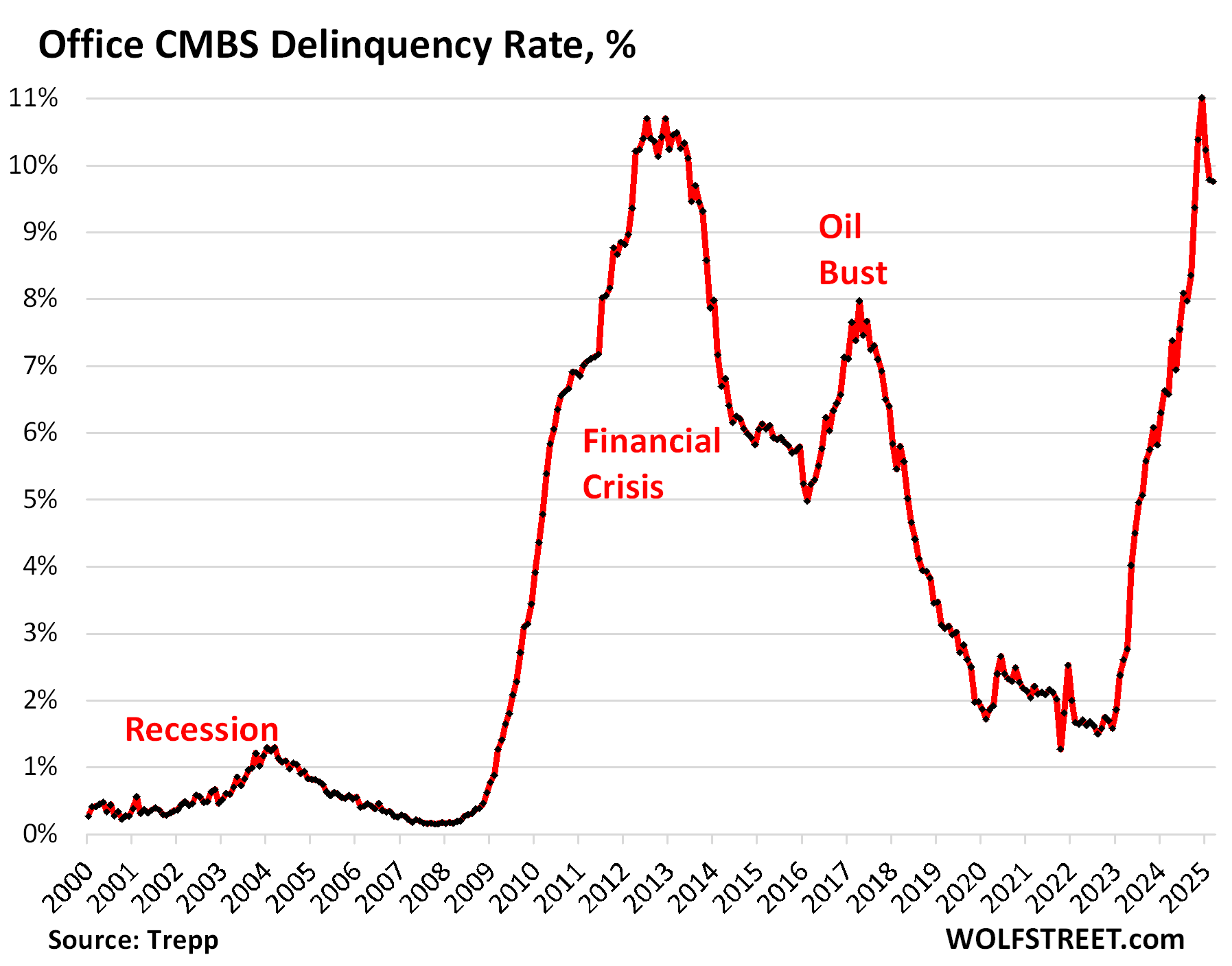[[{“value”:”
But it may take a while before these federal lease terminations work their way into CRE delinquency rates.
By Wolf Richter for WOLF STREET.
Vacant office space in the US grew by an additional 8.06 million square feet (s.f.) in Q1, the 18th quarter of negative net absorption over the past 20 quarters, increasing the amount of vacant office space to a monstrous 1.1 billion s.f.
This pushed the vacancy rate to a record 22.6%, up from the 12%-13% range before the pandemic, according to JLL’s Q1 report.
The drivers behind the jump in vacancies were primarily lease terminations by the federal government and federal contractors putting leased office space on the sublease market.
Under DOGE, terminations of federal office leases since January 20 reached 7.56 million s.f. through April 15 across 653 leases around the US, representing about 4.3% of the total amount of office space leased by the government – not including contractor leases – according to JLL’s separate Federal Lease Termination Tracker.
The announced lease terminations had been higher, but the terminations of 181 leases, totaling 3.08 million s.f., have been rescinded amid enormous chaos.
According to a report by S&P Global Ratings earlier this year, about 78 million s.f. (or 52%) of the General Services Administration’s total 149 million s.f. of leased space could be terminated by the end of 2028 as these leases either expire by then (59.2 million s.f.) or have termination options (18.5 million s.f.). These leases are spread across all states around the US.
Overall office inventory declined by over 11 million s.f. in Q1, to 4.8 billion s.f., driven by two factors:
1. Conversions and redevelopments, such as converting an office tower into condos or apartments: 15 million s.f. of office buildings, where such projects began in Q1, were removed from inventory.
2. Minuscule deliveries of new office space: Only 3.5 million s.f. of new office space was delivered in Q1, by far the lowest in the data going back to 2016. Of that, over 1 million s.f. remained vacant. During the heyday, 15-20 million s.f. of new office space were delivered every quarter.
New office construction has fizzled obviously under these conditions, with groundbreakings in Q1 being under 1 million s.f.
The delinquency rate of office mortgages that have been securitized into commercial mortgage-backed securities (CMBS), after spiking to 11.0% in December and surpassing even the debt-meltdown during the Financial Crisis, declined to 9.8% by the end of Q1, according to data by Trepp, which tracks and analyzes CMBS. CMBS have substantial exposure to government leases that have been or could be terminated.
But it could be a while before these lease terminations show up in the delinquency rates, given how sudden these lease termination announcements came about since January, and how long it will take amid the general chaos for the government to actually stop sending money for those terminated leases, and how long it will take before landlords react by not servicing their debts on those projects, and even then there’s a 30-day grace period before triggering delinquency rates.
So it is likely that most of these government lease terminations have not worked their way into CMBS delinquency rates by the end of March. This is something we’re going to keep out eyes on:

Enjoy reading WOLF STREET and want to support it? You can donate. I appreciate it immensely. Click on the mug to find out how:
![]()
The post Office Vacancy Rate in the US Worsens to Record 22.6% in Q1 amid Federal Government Lease Terminations appeared first on Energy News Beat.
“}]]
Energy News Beat

